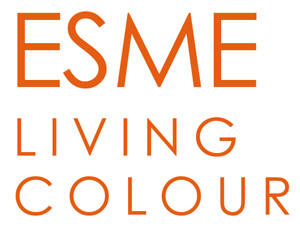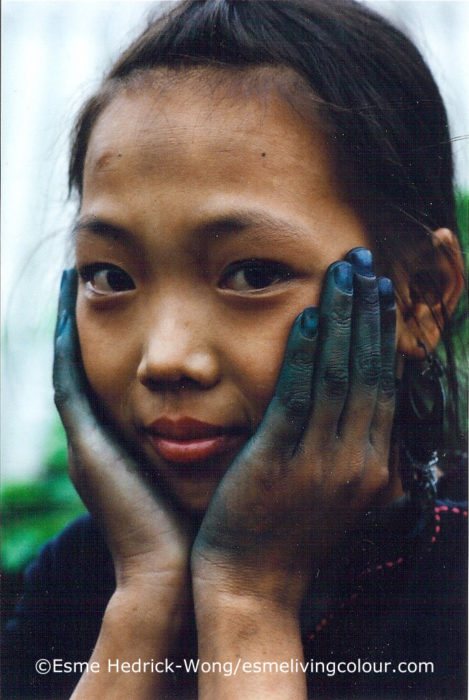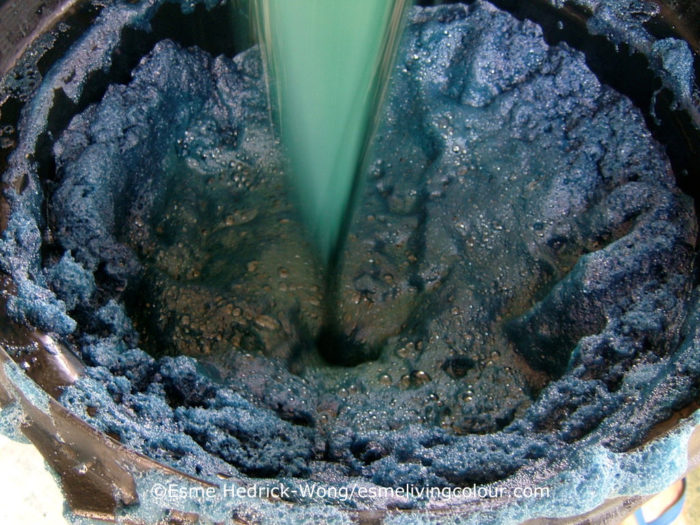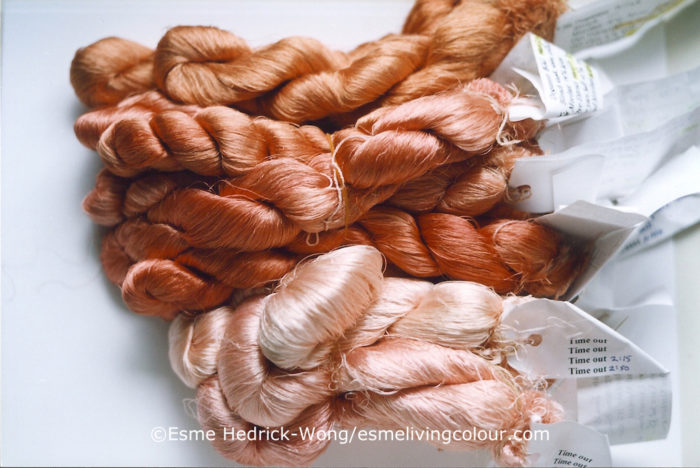NATURAL DYES
In 1996 while working in Bangladesh as a fashion design consultant, I visited a handloom weaving workshop. By chance, I came upon a collection of naturally dyed silk yarn. The colours of these yarns had a depth, richness and luminescence that I had never seen before. During the seventeen years I designed women’s wear I had been searching for such colours. Upon seeing synthetic and naturally dyed yarns side by side, it was evident that the tones of the synthetic yarns were harsh and flat whereas the naturally dyed yarns were subtle and richly nuanced.
- Hmong indigo dyer from Sapa, Vietnam
- Tray of natural dyes
- Making indigo paste
- Naturally dyed silk yarn
- Esme Living Colour naturally dyed hand woven silk shawl
- Esme Living Colour naturally dyed hand woven silk shawl







